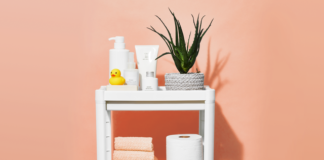
Laminate flooring has become a choice amongst homeowners who are seeking to redo their floors in a manner that looks good, is cost effective and offers durability. A quality laminate floor, which is cheaper than hardwood and easier to maintain, can give a room a clean, tasteful and upscale look.
However, there can be problems with any product, including laminates. Before purchasing a laminate floor, you should consider some common complaints and concerns regarding this popular product. Here are five important problems to keep in mind.
Manufacturing Flaws in Laminates
There can be various manufacturing problems with laminate flooring. Some common ones include blistering, uneven finishes and loose top coating. Always be sure to check each piece of laminate flooring. Flooring that is blistered or with an uneven finish will look bad and loose or peeling top coating and blistering can lead to rapid deterioration of the product.
Other laminate flooring problems include connecting edges that are broken and frayed or broken corners. Both can lead to floors that are loose fitting and they can be responsible for floor movement. Additionally, laminate floor sections that have these problems can appear to be uneven once installed.
One major flooring problem can occur if laminate sections are put down permanently and then the flaws are discovered. Sections are difficult to replace and the process can be extensive. Make sure all sections are checked thoroughly before they are installed.
Installation Problems
Installation problems can be related to the product itself or to the people performing the installation. After installation, some people complain that these floor coverings have a hollow or soft feeling underfoot. This can be due to a lack of padding or a floor having inadequate thickness. Before putting a laminate floor down, check on manufacturer suggestions related to the surface on which you’re installing the product.
Sometimes after a floor is laid corners start to break and crack. Often this is due to improper installation. If the floor isn’t properly anchored and corners bump up against one another, the corners can deteriorate. Chipping can occur if a hard object hits the floor and penetrates the seal. Finally, laminate floor peaking is also sometimes a problem. This occurs when one edge pushes up against another due to expansion. This will create an uneven bulge where the two sections meet. Allowing for expansion of the product along the outer walls is important and will help insure peaking does not occur.
Laminate Flooring and Water
Even though these floors are often sealed and resistant to water, if they are installed in areas that are damp or that collect moisture, they can be damaged over time. Exposure to leaking pipes, sinks and humidity can all take their toll. This is especially true in bathrooms, kitchens and basements. Even if a floor is said to be water resistant and safe to be installed in a moist area, you must make sure that manufacturer specifications relating to installation are followed. If they are not, any warranty will be void.
Slip, Sliding on Slick Laminates
One of the most common laminate flooring problems relates to its slippery quality. Children, pets and the elderly are especially susceptible to slipping on these surfaces. It is very tough to get traction on laminates. One simple solution is to put area rugs with nonslip coatings on the underside in strategic areas.
Replacement and Not Refinishing
When a laminate flooring surface wears down or gets damaged, that’s it. These floors cannot be refinished. If you’re concerned about this problem, then you can combat it by buying a floor with an A3 durability rating and a 20 to 30 year guarantee. Eventually, your laminate floor will have to be replaced. But that would be the case with carpeting, vinyl and even some wood floors. And when you consider that laminate floors are relatively inexpensive, the value it offers over 20 to 30 years is very good.
Laminate Floors Have Many Positives
Although there are laminate flooring problems, these are often outweighed by the benefits. A quality laminate floor is durable, attractive and easy to maintain. If you perform proper research prior to purchasing your floor, follow manufacturer guidelines and ensure correct installation, you should get years and years of quality problem-free performance from your laminate floor.






































